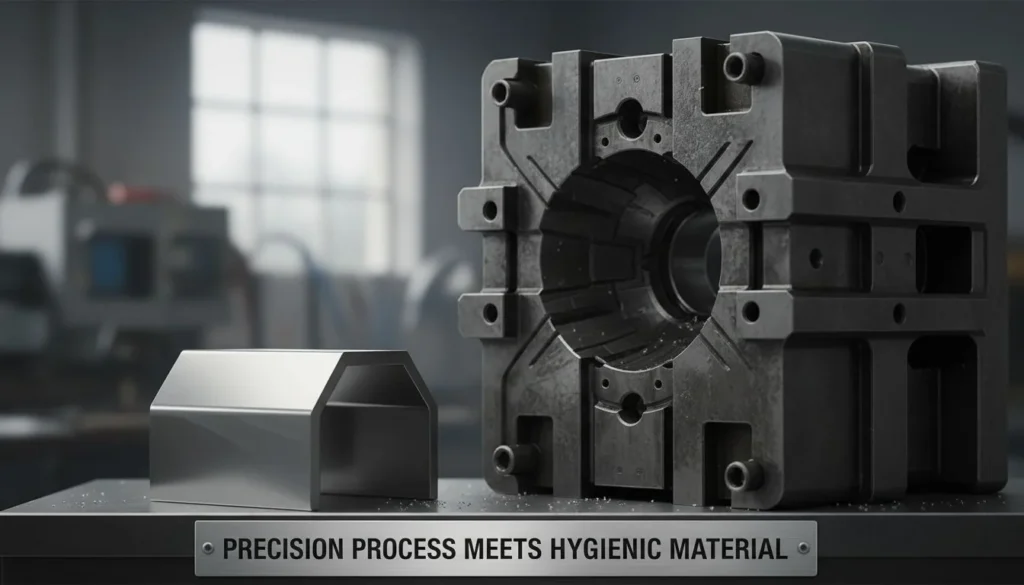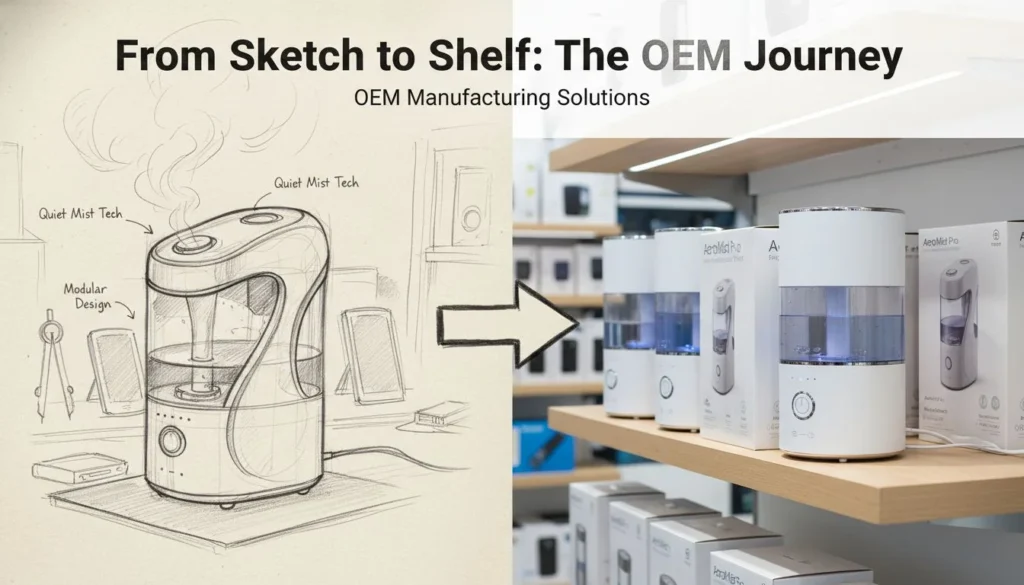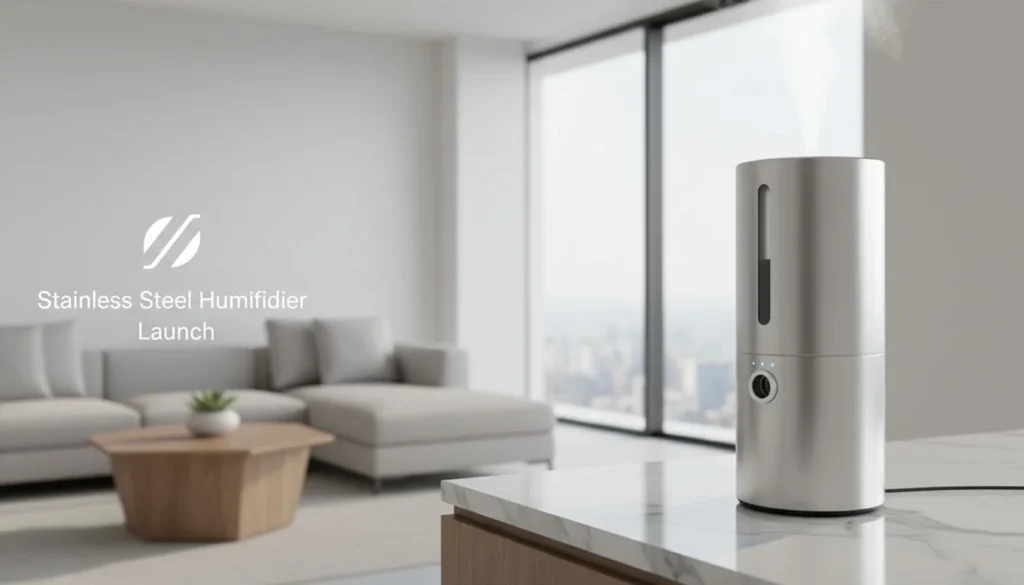
في سعي اليوم للحصول على هواء داخلي أنظف، تلعب تقنية الاستشعار المناسبة في أجهزة تنقية الهواء دوراً محورياً.
عند اختيار تكنولوجيا المستشعرات لأجهزة تنقية الهواء، ضع في اعتبارك عوامل مثل نوع الملوثات التي تريد مراقبتها (على سبيل المثال، PM2.5، والمركبات العضوية المتطايرة)، ودقة المستشعر، والتكامل مع أجهزة إنترنت الأشياء، وسمعة العلامة التجارية، وفعالية التكلفة. تؤثر هذه العناصر على مراقبة جودة الهواء بشكل عام وكفاءة النظام.
في حين أن فهم هذه العوامل الأساسية أمر ضروري، فإن التعمق أكثر في أنواع محددة من أجهزة الاستشعار ووظائفها واتجاهات السوق يمكن أن يزيد من تحسين عملية اتخاذ القرار. تابع القراءة لاستكشاف المشهد المتطور لتقنية مستشعرات أجهزة تنقية الهواء وكيفية مواءمتها مع احتياجاتك.
تعتبر حساسات PM2.5 ضرورية لأجهزة تنقية الهواء.صحيح
فهي تكشف عن الجسيمات الدقيقة، وهي جسيمات مهمة للتلوث الحضري.
ما هي أنواع أجهزة الاستشعار الشائعة في أجهزة تنقية الهواء؟
المستشعرات هي الحراس الصامتون في أجهزة تنقية الهواء، حيث تكتشف الملوثات لضمان هواء نظيف.
تشمل الحساسات الشائعة في أجهزة تنقية الهواء حساسات PM2.5 وحساسات درجة الحرارة والرطوبة, المركبات العضوية المتطايرة حساسات ومستشعرات ثاني أكسيد الكربون. تراقب هذه المستشعرات مختلف الملوثات الداخلية والظروف البيئية، مما يعزز فعالية أجهزة تنقية الهواء في الحفاظ على جودة الهواء الداخلي الصحي.
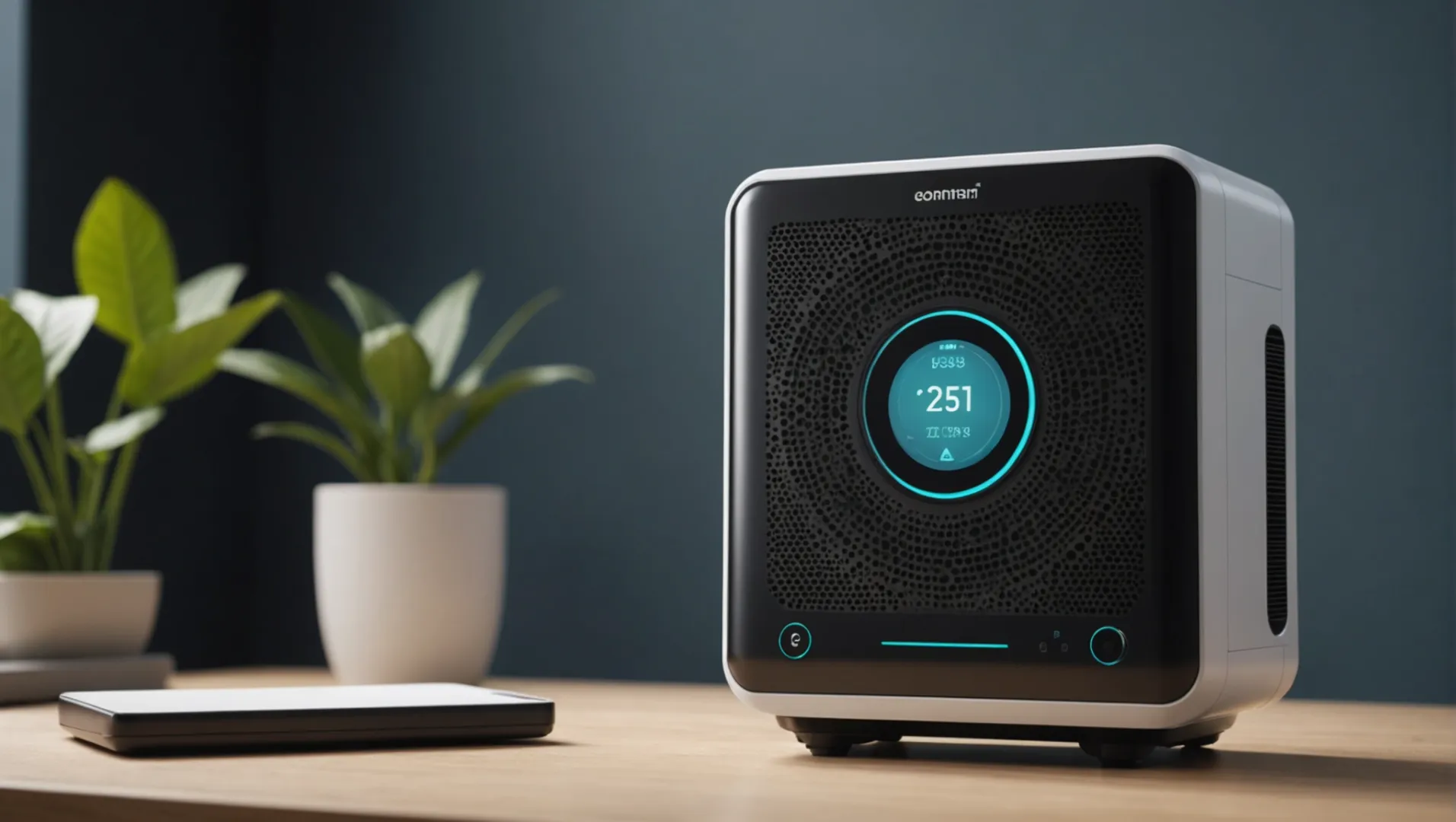
مستشعرات PM2.5: أجهزة استشعار الجسيمات الدقيقة
تُعد أجهزة استشعار PM2.5 ضرورية للكشف عن الجسيمات الدقيقة التي يمكن أن تتغلغل بعمق في الرئتين بل وتدخل مجرى الدم. تقليدياً الشركات السويسرية1 مثل Sensirion كانت رائدة في هذا المجال، حيث تقدم أجهزة استشعار عالية الدقة. ومع ذلك، اكتسبت شركات ناشئة من الصين مثل Cubic و Plantower شهرة لبدائلها الفعالة من حيث التكلفة والأداء العالي.
أجهزة استشعار درجة الحرارة والرطوبة: أجهزة مراقبة الحالة البيئية
تساعد هذه المستشعرات في الحفاظ على ظروف التشغيل المثلى لأجهزة تنقية الهواء من خلال ضبط الإعدادات وفقاً لمستويات درجة الحرارة والرطوبة المحيطة. فهي تضمن عمل جهاز تنقية الهواء بكفاءة في مختلف السيناريوهات البيئية، مما يمنع التلف ويحافظ على جودة الهواء بفعالية.
المركبات العضوية المتطايرة ومستشعرات ثاني أكسيد الكربون الحراس الكيميائيون الحراس الكيميائيون
المركبات العضوية المتطايرة (VOCs) وثاني أكسيد الكربون من الملوثات الداخلية الهامة التي تؤثر على الصحة والراحة. المركبات العضوية المتطايرة تكتشف الحساسات المواد الكيميائية الضارة التي يمكن أن تنبعث منها الغازات من المنتجات المنزلية، بينما تراقب حساسات ثاني أكسيد الكربون نضارة الهواء. ويساعد دمج هذه المستشعرات في معالجة مجموعة واسعة من مشاكل جودة الهواء الداخلي.
تقنيات الاستشعار الناشئة: ما بعد الأساسيات
مع التطورات في مجال إنترنت الأشياء والذكاء الاصطناعي، بدأت أجهزة تنقية الهواء الحديثة في دمج أجهزة استشعار إضافية مثل مستشعرات الضوضاء والضوء والضغط والإشغال. وتأتي شركات مثل HisoAir في طليعة الشركات التي تعمل على دمج هذه المستشعرات جودة البيئة الداخلية2 مستشعرات، مما يمهد الطريق لأنظمة تنقية هواء أكثر ذكاءً وتكيّفاً.
لاختيار المجموعة المناسبة من أجهزة الاستشعار، من الضروري النظر في الملوثات المحددة التي تحتاج إلى رصدها في بيئتك ونسبة التكلفة إلى الفائدة لكل نوع من أنواع أجهزة الاستشعار. يمكن أن يؤدي التعاون مع الموردين ذوي الخبرة إلى تخصيص اختياراتك لتناسب متطلباتك الخاصة على أفضل وجه.
تكتشف مستشعرات PM2.5 الجسيمات الدقيقة.صحيح
تراقب مستشعرات PM2.5 الجسيمات التي يمكن أن تدخل مجرى الدم.
تقيس حساسات ثاني أكسيد الكربون CO2 درجة الحرارة في أجهزة تنقية الهواء.خطأ
تقيس حساسات ثاني أكسيد الكربون مستويات ثاني أكسيد الكربون، وليس درجة الحرارة.
كيف تؤثر تقنيات الاستشعار على كفاءة أجهزة تنقية الهواء؟
بفضل تقنية الاستشعار في جوهرها، تحقق أجهزة تنقية الهواء الأداء الأمثل وجودة الهواء المحسّنة.
تؤثر تقنيات المستشعرات على كفاءة أجهزة تنقية الهواء من خلال الكشف الدقيق عن الملوثات وتحسين استخدام الفلتر وتمكين الوظائف الذكية. أجهزة الاستشعار مثل PM2.5 و CO2 و المركبات العضوية المتطايرة تلعب دورًا حاسمًا في مراقبة جودة الهواء وتحفيز إجراءات التنقية المناسبة، وبالتالي تحسين الكفاءة العامة ورضا المستخدم.
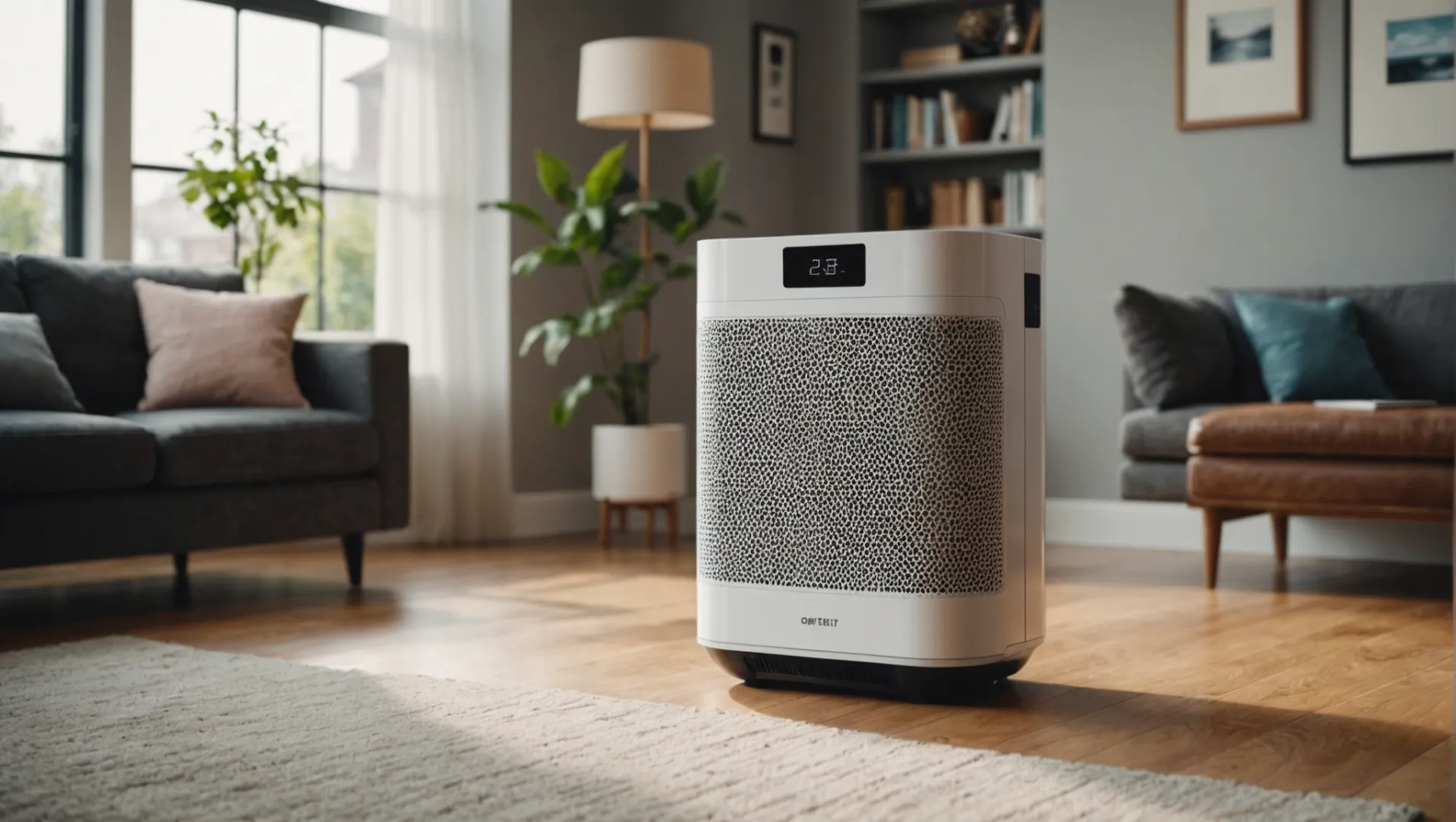
فهم أنواع المستشعرات الرئيسية في أجهزة تنقية الهواء
تستخدم أجهزة تنقية الهواء مجموعة متنوعة من أجهزة الاستشعار لتعزيز كفاءتها وفعاليتها في الحفاظ على جودة الهواء الداخلي. ومن بين هذه الأجهزة مستشعرات PM2.53 مهمة جداً لأنها تكتشف الجسيمات الدقيقة، وتنبه جهاز تنقية الهواء لضبط قوة الترشيح وفقاً لذلك. وهذا أمر حيوي للأفراد الذين يعيشون في المناطق الحضرية ذات مستويات التلوث العالية.
بالإضافة إلى ذلك, مستشعرات ثاني أكسيد الكربون4 المساعدة في مراقبة مستويات ثاني أكسيد الكربون، مما يضمن بقاء الهواء في الداخل نقيًا وصحيًا. مع زيادة وعي المستهلكين, المركبات العضوية المتطايرة كما أصبحت حساسات (المركبات العضوية المتطايرة) ميزة قياسية. تحدد هذه المستشعرات الغازات والمواد الكيميائية الضارة، مما يدفع جهاز التنقية إلى تنشيط عمليات التنظيف اللازمة.
دور دقة الاستشعار وسمعة العلامة التجارية
تعتمد كفاءة جهاز تنقية الهواء بشكل كبير على دقة أجهزة الاستشعار الخاصة به. وقد أصبحت أجهزة الاستشعار من علامات تجارية مرموقة مثل Sensirion والداخلين الجدد مثل Cubic و Plantower معايير الصناعة بسبب موثوقيتها ودقتها.
من العوامل الرئيسية التي يجب أخذها في الاعتبار مدى تكامل هذه المستشعرات مع الأجهزة المنزلية الذكية الأخرى. لا يؤدي هذا التكامل إلى تحسين راحة المستخدم فحسب، بل يسمح أيضًا بجمع بيانات أكثر دقة، مما يؤدي إلى عمليات تنقية أكثر ذكاءً.
دمج إنترنت الأشياء لتعزيز تنقية الهواء
أحدث إنترنت الأشياء (IoT) ثورة في كيفية عمل أجهزة تنقية الهواء. من خلال دمج أجهزة تنقية الهواء مع تقنية إنترنت الأشياء، يمكن لأجهزة تنقية الهواء الآن جمع البيانات من مصادر متعددة مثل درجة الحرارة والرطوبة وحتى مستويات الضوضاء. تقود شركات مثل HisoAir هذا الاتجاه من خلال دمج IEQ أجهزة الاستشعار5 التي تراقب مختلف المعايير البيئية، مما يوفر نهجًا أكثر شمولاً لإدارة جودة الهواء.
وتعني هذه التطورات في تكنولوجيا المستشعرات أن أجهزة تنقية الهواء يمكن أن تعمل بشكل مستقل، حيث تقوم بضبط إعداداتها بناءً على البيانات في الوقت الحقيقي. وهذا يؤدي إلى تحسين كفاءة الطاقة ويضمن عمل جهاز تنقية الهواء على النحو الأمثل في جميع الأوقات.
فعالية التكلفة واتجاهات السوق
على الرغم من أن أجهزة الاستشعار عالية الجودة غالبًا ما تأتي بسعر أعلى، إلا أن فعاليتها من حيث التكلفة بمرور الوقت يمكن أن تفوق النفقات الأولية. ويشهد السوق تحولاً نحو تقنيات مستشعرات أكثر موثوقية وبأسعار معقولة من علامات تجارية مثل Cubic و Plantower. هذا الاتجاه مشجع لأنه يسمح للمستهلكين بالوصول إلى حلول متقدمة لتنقية الهواء دون أن يكلفهم الكثير.
من خلال فهم هذه العوامل، يمكن للمستهلكين اتخاذ قرارات مستنيرة بشأن أجهزة تنقية الهواء التي تلبي احتياجاتهم على أفضل وجه مع ضمان أقصى قدر من الكفاءة.
تقوم مستشعرات PM2.5 بضبط قوة ترشيح جهاز تنقية الهواء.صحيح
تكتشف مستشعرات PM2.5 الجسيمات الدقيقة، مما يحث على إجراء تعديلات في الترشيح.
يقلل تكامل إنترنت الأشياء من كفاءة أجهزة تنقية الهواء.خطأ
تعمل إنترنت الأشياء على تعزيز الكفاءة من خلال تمكين التعديلات المستندة إلى البيانات في الوقت الفعلي.
ما هي العلامات التجارية التي تقدم مستشعرات موثوقة لجودة الهواء؟
يعد اختيار علامة تجارية موثوق بها لأجهزة استشعار جودة الهواء أمرًا بالغ الأهمية لتنقية الهواء بفعالية.
تشمل العلامات التجارية الموثوقة لمستشعرات جودة الهواء Sensirion و Cubic و Plantower و HisoAir. تشتهر هذه الشركات بتكنولوجيا أجهزة الاستشعار المتقدمة التي تقدم دقة عالية وقدرات تكاملية عالية. عند اختيار علامة تجارية، ضع في اعتبارك عوامل مثل الأداء والفعالية من حيث التكلفة والتوافق مع أنظمة إنترنت الأشياء لضمان المراقبة المثلى لجودة الهواء.

سينسيريون: الدقة السويسرية في تكنولوجيا الاستشعار
شركة Sensirion هي شركة سويسرية تشتهر بالدقة العالية التي تتميز بها مستشعرات جودة الهواء6خاصة لمراقبة PM2.5 ودرجة الحرارة والرطوبة. تُستخدم مستشعراتها على نطاق واسع في أجهزة تنقية الهواء المتميزة نظرًا لدقتها وموثوقيتها الاستثنائية. إن خبرة Sensirion في تكامل أجهزة الاستشعار تجعلها الخيار الأفضل لأولئك الذين يعطون الأولوية للدقة في قياس جودة الهواء.
نجوم صاعدة من الصين: كيوبك وبلانتاور
في السنوات الأخيرة، اكتسبت العلامات التجارية الصينية مثل Cubic و Plantower شهرة في صناعة أجهزة تنقية الهواء. تشتهر هذه العلامات التجارية مستشعرات PM2.5 الفعالة من حيث التكلفة7تقدم هذه العلامات التجارية تحسينات رائعة في الأداء تنافس الأسماء الأكثر شهرة. مع استمرار تقدم التكنولوجيا، أصبحت هذه العلامات التجارية خيارات شائعة بشكل متزايد بين المصنعين الذين يبحثون عن حلول موثوقة وبأسعار معقولة.
توسيع قدرات الاستشعار: ابتكار شركة هيسو إير
إن شركة HisoAir هي شركة رائدة في مجال توريد أجهزة الاستشعار المختلفة لتعزيز وظائف أجهزة تنقية الهواء. ويشمل نهجهم إضافة ثاني أكسيد الكربون, المركبات العضوية المتطايرةوأجهزة استشعار الفورمالدهايد، التي تعالج طيفًا واسعًا من الملوثات الداخلية. دمج جهاز HisoAir لـ جودة البيئة الداخلية (IEQ) المستشعرات8 مثل الضوضاء والضوء وأجهزة استشعار الإشغال تمثل استراتيجية تفكير مستقبلية تتماشى مع الطلب المتزايد على أنظمة تنقية هواء أكثر ذكاءً وشمولية.
عوامل يجب مراعاتها عند اختيار العلامة التجارية للمستشعر
عند اختيار العلامة التجارية لجهاز الاستشعار، ضع في اعتبارك الملوثات المحددة التي تحتاج إلى مراقبتها ومتطلبات النظام بشكل عام. قم بتقييم المستشعر قدرات التكامل مع أنظمة إنترنت الأشياء9والتي يمكن أن تعزز دقة وكفاءة المراقبة بشكل كبير. بالإضافة إلى ذلك، قم بتقييم سمعة العلامة التجارية من حيث الابتكار ودعم العملاء والامتثال لمعايير الصناعة.
| العلامة التجارية | الميزات الرئيسية | المنتجات البارزة |
|---|---|---|
| سينسيريون | دقة وموثوقية عالية | مستشعرات PM2.5 |
| مكعب | فعالة من حيث التكلفة، وتحسين الأداء | مستشعرات PM2.5 |
| بلانتاور | جودة معترف بها وبأسعار معقولة | مستشعرات PM2.5 |
| هيسو إير | التكامل المبتكر بين أجهزة الاستشعار المتعددة | IEQ المستشعرات |
يمكن أن يؤدي فهم نقاط قوة كل علامة تجارية وكيفية توافقها مع احتياجاتك الخاصة إلى تحسين مراقبة جودة الهواء وتحسين البيئات الداخلية.
تشتهر مستشعرات Sensirion بالدقة العالية.صحيح
تشتهر شركة Sensirion بأجهزة استشعار جودة الهواء الدقيقة، خاصةً PM2.5.
تنتج شركة HisoAir مستشعرات PM2.5 فقط.خطأ
يدمج HisoAir أجهزة استشعار مختلفة، بما في ذلك ثاني أكسيد الكربون والمركبات العضوية المتطايرة، وليس فقط PM2.5.
كيف يمكن لإنترنت الأشياء والذكاء الاصطناعي تعزيز أجهزة استشعار تنقية الهواء؟
وبفضل إنترنت الأشياء والذكاء الاصطناعي، تم إحداث ثورة في أجهزة تنقية الهواء، مما يوفر إدارة أكثر ذكاءً وفعالية لجودة الهواء.
تعمل تقنيات إنترنت الأشياء والذكاء الاصطناعي على تحسين أجهزة استشعار أجهزة تنقية الهواء من خلال تمكين جمع البيانات في الوقت الحقيقي والتحليلات التنبؤية والاستجابة التكيفية لظروف جودة الهواء المتغيرة. يسمح هذا التكامل لأجهزة تنقية الهواء بضبط الإعدادات بشكل مستقل، مما يضمن جودة الهواء الداخلي المثلى وكفاءة الطاقة.
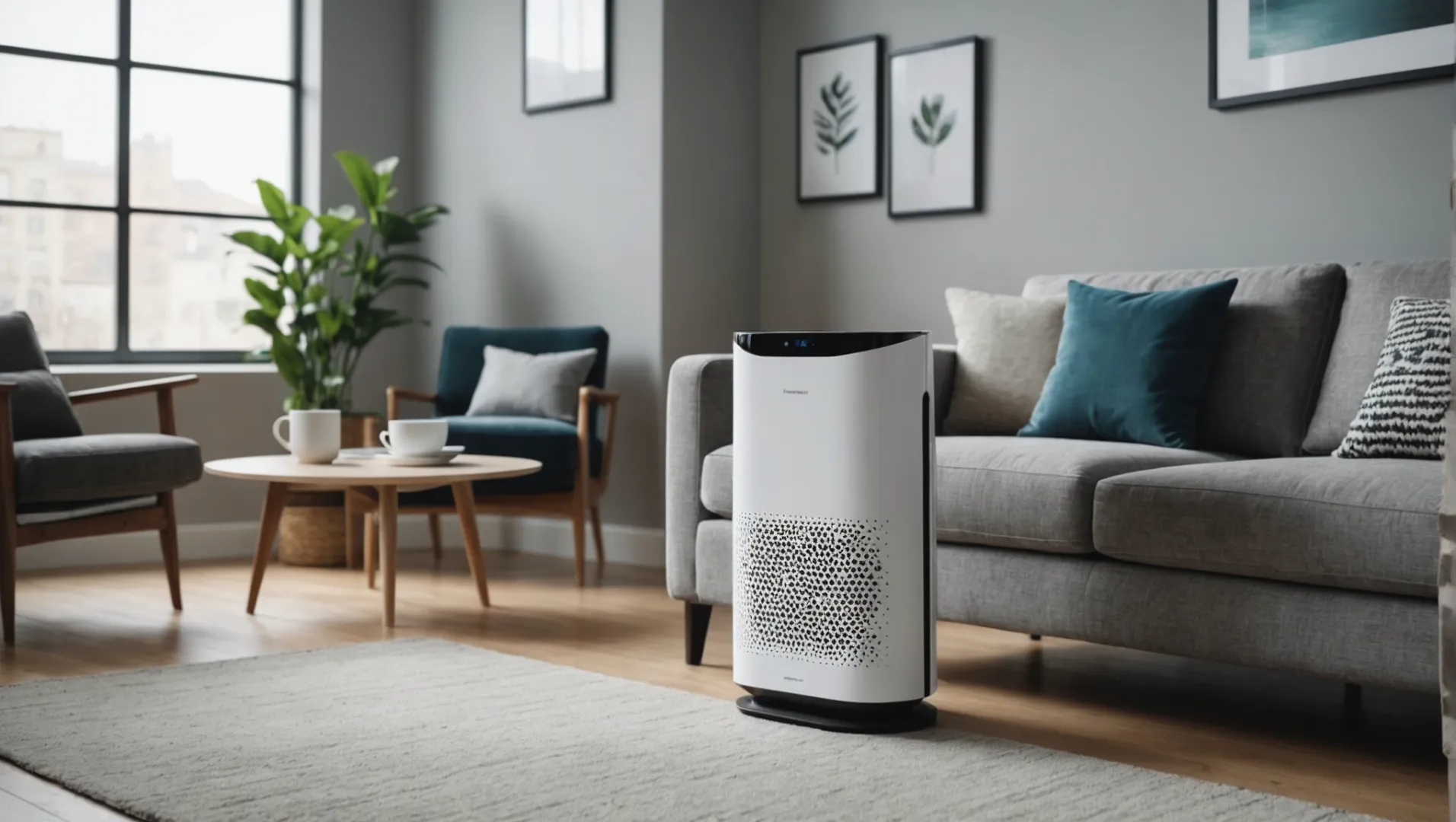
دور إنترنت الأشياء في أجهزة تنقية الهواء
يتيح دمج إنترنت الأشياء (IoT) في أجهزة تنقية الهواء إمكانية التواصل السلس بين الأجهزة. يمكن لأجهزة الاستشعار التي تدعم إنترنت الأشياء نقل بيانات جودة الهواء في الوقت الفعلي إلى نظام مركزي، مما يوفر للمستخدمين رؤى مفصلة عن بيئتهم الداخلية. لا يعزز هذا الاتصال تجربة المستخدم فحسب، بل يساهم أيضاً في تدابير توفير الطاقة من خلال ضبط إعدادات أجهزة تنقية الهواء بناءً على الاحتياجات الحالية. وقد كانت العلامات التجارية الرائدة مثل HisoAir رائدة في هذا النهج، حيث قامت بتضمين أجهزة استشعار متقدمة مثل أجهزة استشعار الضوضاء والضوء في موديلاتها.
تأثير الذكاء الاصطناعي على وظائف المستشعرات
يرتقي الذكاء الاصطناعي (AI) بتكامل أجهزة الاستشعار إلى المستوى التالي من خلال استخدام خوارزميات التعلم الآلي لتحليل البيانات المجمعة. من خلال فهم الأنماط في تغيرات جودة الهواء، يمكن للذكاء الاصطناعي التنبؤ بارتفاعات التلوث وتعديل تشغيل جهاز تنقية الهواء وفقاً لذلك. على سبيل المثال، يمكن للذكاء الاصطناعي أن يتعلم روتين المنزل ويزيد الترشيح بشكل استباقي أثناء الطهي أو أوقات التنظيف، مما يحسّن أداء الجهاز.
الإدارة المعززة لجودة الهواء
من خلال الجمع بين إنترنت الأشياء والذكاء الاصطناعي، يمكن لأجهزة تنقية الهواء أن تتخطى مجرد الكشف عن الملوثات. فهي توفر الآن جودة شاملة للبيئة الداخلية (IEQ) التقييم من خلال دمج أجهزة استشعار متعددة مثل ثاني أكسيد الكربون والمركبات العضوية المتطايرة وكاشفات الفورمالديهايد. يضمن هذا النهج متعدد المستشعرات رصد طيف أوسع من ملوثات الهواء، مما يوفر جواً داخلياً أكثر صحة.
اتجاهات السوق وابتكارات العلامات التجارية
مع تطور تقنيات أجهزة الاستشعار، برزت علامات تجارية مثل Cubic و Plantower كلاعبين مهمين في هذه الصناعة. فهي تقدم حلولاً فعالة من حيث التكلفة لا تتنازل عن الأداء. تُعد هذه التطورات بالغة الأهمية مع تزايد طلب المستهلكين على الأجهزة المنزلية الذكية التي يمكن الاعتماد عليها وبأسعار معقولة.
لا يؤدي دمج إنترنت الأشياء والذكاء الاصطناعي في مستشعرات أجهزة تنقية الهواء إلى الارتقاء بالتقنية فحسب، بل يتماشى أيضًا مع أهداف المعيشة المستدامة من خلال تحسين كفاءة الطاقة. للمزيد من المعلومات حول أحدث التطورات في تقنيات أجهزة الاستشعار، يمكنك الاطلاع على اتجاهات سوق أجهزة الاستشعار10 اليوم.
يتيح إنترنت الأشياء جمع البيانات في الوقت الفعلي في أجهزة تنقية الهواء.صحيح
يسمح إنترنت الأشياء لأجهزة الاستشعار بنقل بيانات جودة الهواء في الوقت الفعلي لتحليلها.
لا يمكن للذكاء الاصطناعي التنبؤ بارتفاع التلوث في أجهزة تنقية الهواء.خطأ
يستخدم الذكاء الاصطناعي التعلم الآلي للتنبؤ بارتفاعات التلوث بناءً على أنماط البيانات.
الخاتمة
يتضمن اختيار تقنية الاستشعار المناسبة الموازنة بين الأداء والتكلفة. حدد أولويات أجهزة الاستشعار الأساسية بناءً على احتياجاتك وفكر في الموردين ذوي السمعة الطيبة لتحسين جودة الهواء.
-
اكتشف العلامات التجارية الرائدة في مجال أجهزة الاستشعار من سويسرا والمعروفة بالدقة: تجعل فلترة IQAir's HyperHEPA من سلسلة HealthPro أفضل أجهزة تنقية الهواء، حيث أثبتت جدارتها واعتمادها لتصفية 99.5% من أصغر الجسيمات الموجودة. ↩
-
تعرف على المستشعرات المتطورة التي تعزز تقنية تنقية الهواء....: تقدم هذه الصفحة نتائج أبحاث الدراسات التي أجريت لتقييم أداء ودقة تكنولوجيا مستشعرات الهواء. ↩
-
تعرف على كيفية اكتشاف مستشعرات PM2.5 للجسيمات الدقيقة بفعالية..: مستشعر PM2.5 هو مستشعر عالي الدقة يراقب تركيز جسيمات PM2.5 في الوقت الحقيقي. ↩
-
اكتشف دور حساسات ثاني أكسيد الكربون في الحفاظ على هواء داخلي نقي...: تستخدم حساسات ثاني أكسيد الكربون الكهروكيميائية ثاني أكسيد الكربون التيار الكهربائي أو الموصلية لقياس تركيزات ثاني أكسيد الكربون في الهواء. عندما يدخل ثاني أكسيد الكربون إلى المستشعر، يحدث تفاعل كيميائي ... ↩
-
اكتشف كيف تعزز مستشعرات IEQ من الإدارة الشاملة لجودة الهواء: تقيس هذه المستشعرات العديد من المعلمات المتعلقة براحة المكان الداخلي، مثل درجة الحرارة والرطوبة ومستويات ثاني أكسيد الكربون وغيرها. ↩
-
اكتشف سبب ريادة Sensirion في تكنولوجيا المستشعرات الدقيقة: صُممت أجهزة مراقبة جودة الهواء الداخلي لقياس وتقييم مختلف المعلمات والملوثات. فهي تتبع ظروف الهواء وتقدم تقارير عن ظروف الهواء في الوقت الفعلي. ↩
-
استكشف مراجعات المستخدمين على مستشعرات PM2.5 من Cubic و Plantower: على الرغم من أن الجهاز يفتقر إلى مستشعر المركبات العضوية المتطايرة، إلا أنني يمكنني أن أغفر ذلك بسعره المعقول. ↩
-
تعرّف على استراتيجيات دمج أجهزة الاستشعار المبتكرة من هيسو إير..: من خلال الجمع بين مستشعرات درجة الحرارة والرطوبة والضوضاء والضوء، يضمن نظامنا جودة الهواء والراحة المثلى. يتكيف بذكاء في الوقت الحقيقي مع ... ↩
-
فهم كيفية تعزيز إنترنت الأشياء لوظائف مستشعرات جودة الهواء..: إن استخدام إنترنت الأشياء لمراقبة جودة الهواء يعني أن المدن يمكنها الحصول على رؤى في الوقت الفعلي لمستويات الملوثات. وتعد هذه الفورية في الحصول على البيانات أمرًا محوريًا لسرعة ... ↩
-
اكتشف أحدث التطورات والابتكارات في تكنولوجيا أجهزة الاستشعار...: ستأتي العديد من أجهزة تنقية الهواء مزوّدة بمستشعرات مرمّزة بالألوان لإعلامك بمستوى الجسيمات في منزلك. ستقوم الوحدة بعد ذلك بالتكيف تلقائيًا مع ... ↩




